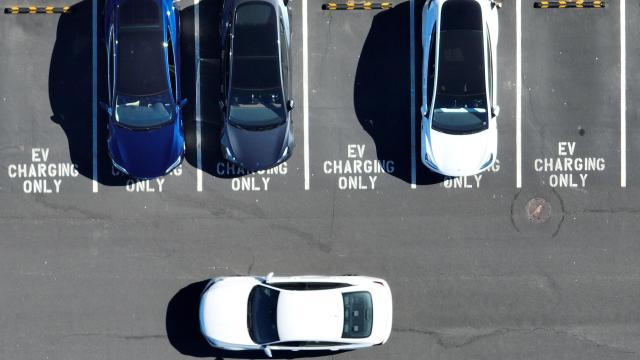There’s no question that EVs are better for the environment as far as tailpipe emissions go, but research suggests that the production of batteries poses a problem when comparing EVs and ICE-equipped cars. In order for EVs to be environmentally beneficial, drivers must pass a certain mileage threshold, but many U.S. households are not driving their new EVs enough to offset emissions from the production of their fully-electric cars, according to a Harvard study.
The study, coauthored by Ashley Nunes and Lucas Woodley, goes on to say people who seldom drive are better off with an ICE-equipped vehicle, which emits more CO2 throughout its lifetime but foregoes the heavily-polluting process of battery production. It’s all about miles driven in the end; in order for EVs to reach their emissions-reducing potential the sweet spot is between 28,069 and 68,160 miles. Per the Harvard Gazette:
“If you’re somebody who drives a fair amount then you are likely well-suited to drive an electric vehicle,” Woodley said. “If, on the other hand, you’re someone who seldom drives, and the vehicle is mostly going to sit in the garage, then you may counterintuitively be better off owning a gasoline-powered vehicle.”
This is because the batteries that power EVs are responsible for an outsise share of emissions during the manufacturing process. Because EVs are dirtier to build but cleaner to drive, Woodley explained, they must meet certain mileage thresholds before environmental advantages are realised. In the U.S., the typical non-luxury EV needs to log between 28,069 and 68,160 miles before netting any emissions benefits.
“However, many households sell their vehicle before they get there,” he said.
The study looked at subsidies and how the U.S. government is incentivising EV ownership. The authors conclude that subsidies tend to “flow to the well-off,” which incentivises the wrong buyers. We could argue there are no wrong buyers as the country seeks to increase EV use on public roads, but there is something to be said about prioritising used EV sales — especially when these cars are hardly reaching the mileage needed to realise their environmental advantages.
According to the study, many EVs are bought as second cars, but go mostly unused. The thing about EVs is that the more we use them, the more their benefits are manifest. But there is much holding back their use, even among EV owners who are limited by currently available charging networks in the U.S.
Shortly after the Harvard study was published, the authors released a policy memo that recommended incentivising second-hand EV sales, and the Biden administration added used EV tax credits via the Inflation Reduction Act. The authors have now suggested adding incentives for EVs that will go to workers who actually drive their cars enough to reach mileage requirements to see the environmental benefits of EVs. All in all, unless owners plan to keep their EVs past 69,000 miles, their carbon footprint won’t actually shrink courtesy of switching to fully-electric cars.
Want more Aussie car news? Here’s every EV we’ve reviewed in the last two years, all the EVs we can expect down under soon, and our guide to finding EV chargers across the country. Check out our dedicated Cars tab for more.
